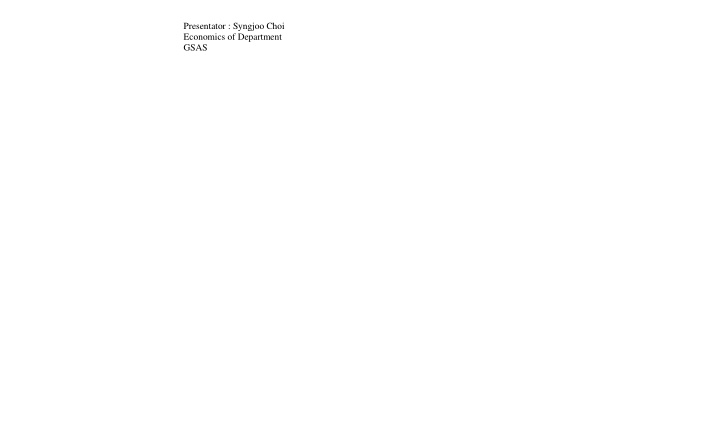



Presentator : Syngjoo Choi Economics of Department GSAS
Hong Kong stock market panic Nov. Korean Won collapses . Haitai (24 th ) , New-Core (28 th ) bankrupt. Dec. Korea gets IMF bail-out Kim Dae-Jung as a new president Jan. Korea restructures debts Peregrines goes bust 1998 Rupiah falls to lowest level ever April A slow recovery of stock Japan begins liberalizing market and exchanges market financial markets Aug. Russia declares moratorium
* Excessive short-term foreign exchange liabilities
million U 10000 5000 0 90 91 92 93 94 95 96 97 98 99 2000 -5000 Source : BOK, partially cited from Rhee and Lee (98)
- A bad equilibrium · Exchange Rate Devaluation · Moral Hazard - Overinvestment - Too big to fail
Growth % 0 83-89 90 91 92 93 94 95 96 97 98 1Q 98 2Q 98 3Q 98 4Q 99 2000 -5 -10 Source : The Bank of Korea
5 Unemployment Rate % CA(Current A.)/GDP 0 83-89 90 91 92 93 94 95 96 97 98 1Q 98 2Q 98 3Q 98 4Q 99 2000 -5 -10 Source : The Bank of Korea
Short/Reserves 100 50 0 90 91 92 93 94 95 96 97 Source : Ministry of Finance in Korea
Number of financial institutions 1990 91 92 93 94 95 96 97 Banks 23 25 26 26 26 26 26 26 Merchant 6 6 6 6 15 15 30 30 banking companies Insurance 45 49 49 49 49 49 49 50 companies Securities 25 31 32 32 32 33 34 36 companies
- IMF Programs - Structural Policy Responses
workout procedures, Legislation allowing M&As, Phasing out of cross-guarantees among companies belonging to same chaebol. - Strengthening performance: Improved governance (Strengthening shareholders), Greater competition
15 10 5 0 70 76 80 82 85 88 93 96 97 1Q 97 2Q 97 3Q 97 4Q 98 1Q 98 2Q 98 3Q Source : cited from Rhee and Lee (98), Na and Moon (00)
Recommend
More recommend